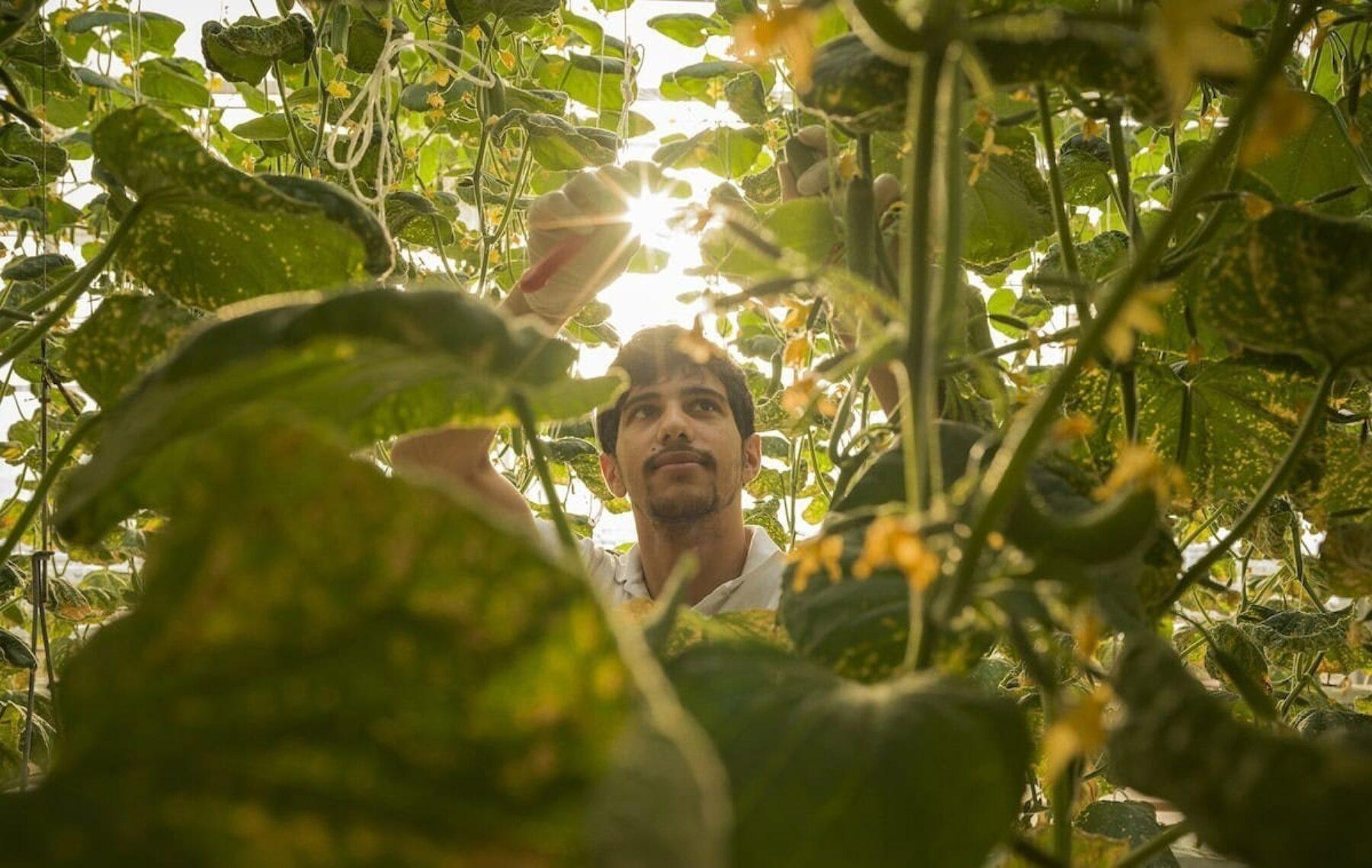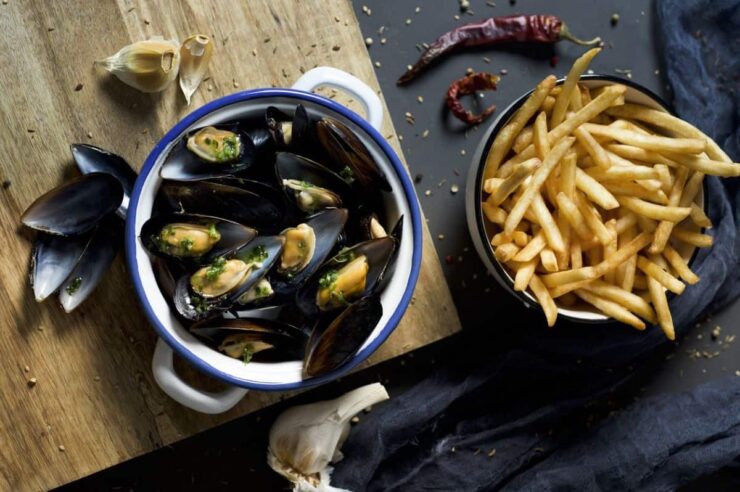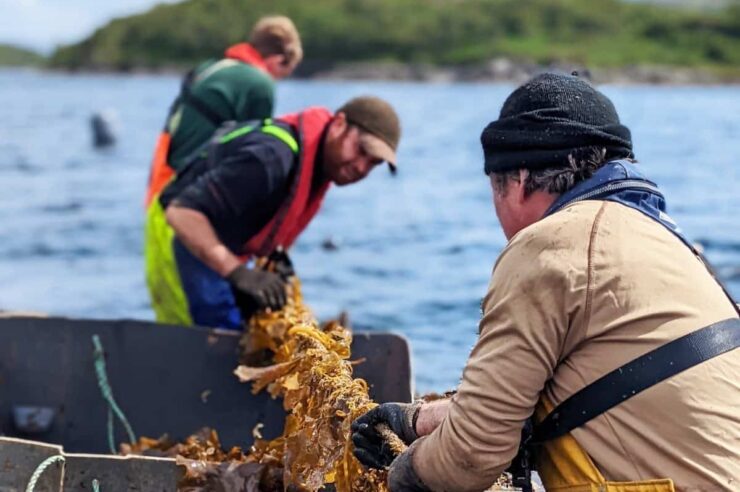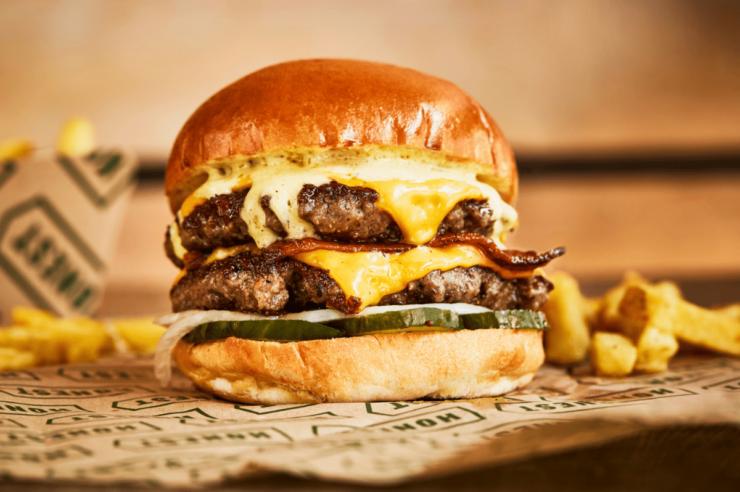This Jordanian farm shows it’s possible to grow vegetables in the unlikeliest places, using lo-fi tech that’s widely available
In one of the world’s driest places, water is flowing and crops are growing.
Here in Aqaba on Jordan’s Red Sea coast, the desert farmers are at work. This is one of the world’s most water-poor countries – a place that imports 98 per cent of its food – yet cucumbers, peppers and passion fruit are thriving.
It’s called the Sahara Forest Project, and it’s showing how farming can adapt to the challenges of climate change and water scarcity. And this futuristic farm is just getting started.
The whole place runs on sunlight and seawater. Solar panels provide power for a system that evaporates seawater, helping keep air in the greenhouses cool and humid, while also removing salt. Around the greenhouses, plants that can tolerate salt are grown in hedges to provide further cooling.
In the shadows of solar panels, crops grow that wouldn’t thrive in the harsh sunlight, such as herbs and salads. Farm workers pollinate plants by hand, and bring in wasps to provide natural pest control. Processes are being developed to turn waste products from the farm and other nearby businesses into fertiliser, so the farm enriches the soil rather than degrading it.
Kjetil Stake, managing director of the Sahara Forest Project, says that too often, land is destroyed to make food. “Our project is an example of how you can reverse that. Showing that it’s possible to produce food in a way which is good for the planet rather than bad for the planet.”
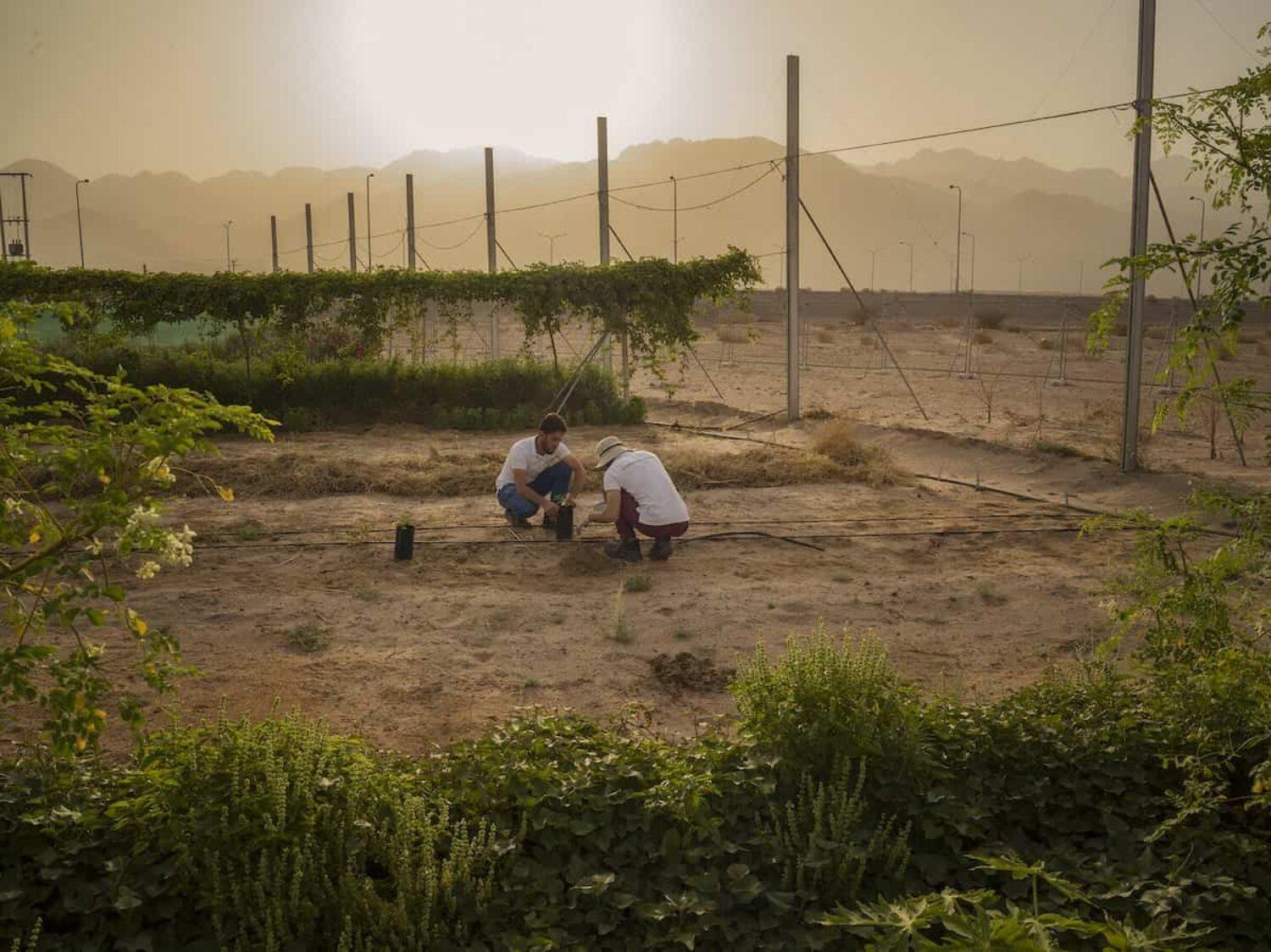
Crops are irrigated with seawater that was desalinated using solar power. Image: Klaus Thymann
This year’s main crop is snack cucumbers, in preparation for a large shipment to Norway in the autumn. Past harvests include salads, sweet potatoes, beans and herbs. Sahara Forest vegetables have been served to passengers on Costa cruise ships.
The story began in 2009 when the team behind the project got the chance to present their idea at the UN climate conference in Copenhagen. That led to an invitation from the king of Jordan, a pilot project in Qatar, and in 2016, construction of the Aqaba farm.
Now the desert farmers have proven that their idea works, the project is scaling up. A pipeline is being dug to replace the trucks that have been bringing the seawater, making it possible for the whole operation to absorb more carbon from the atmosphere than it puts in. The hope is to employ 200 people in Aqaba, and to bring the system to more desert locations. A project is already underway in Tunisia, and Stake says “the whole of north Africa is an opportunity”. Backers of the project include the Norwegian government, the European Union and the Bellona Foundation, a Norwegian NGO.
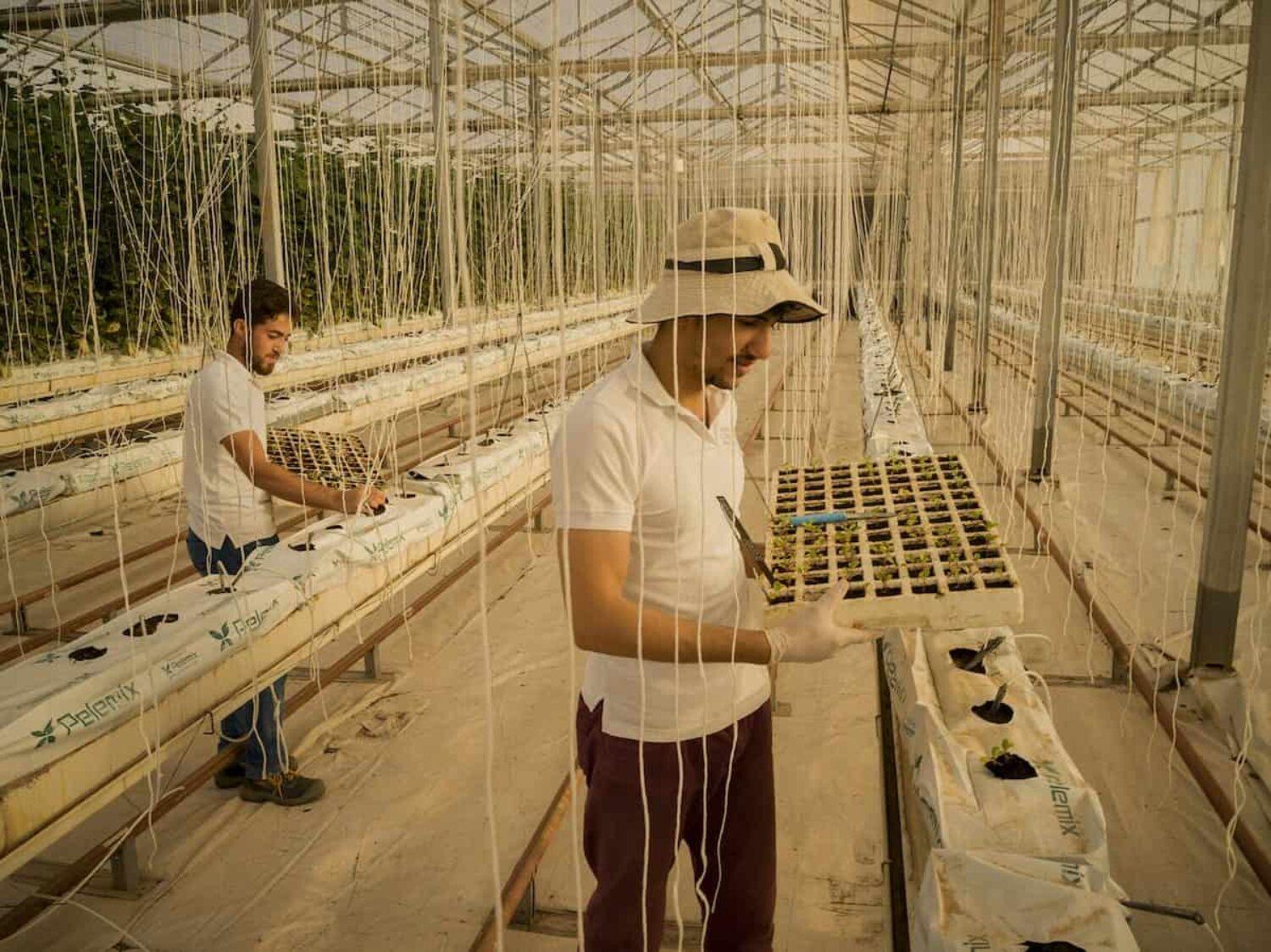
Fuad Al Riyati and Mahmoud Al Shehab plant seedlings in one of the greenhouses. Image: Klaus Thymann
There’s a social side to the project too, as the farm has helped to create jobs and, together with Al Hussein Technical University, provide training for young female engineers.
Stake says: “Climate scientists say we need a radical change in the way we produce food. And that is why we, over the last four years, have shown on the ground in Aqaba that it’s possible to do something about those challenges: using saltwater, deserts and CO2 to produce what we need more of: sustainable food, water and clean energy.
“What excites me is to show that it’s possible. I’m so tired of people saying, nothing is happening, it’s just problems, problems, problems. People believe what they hear, so if we can convey the message that it is possible, and it is commercially viable, then I think we can get that change much faster.”
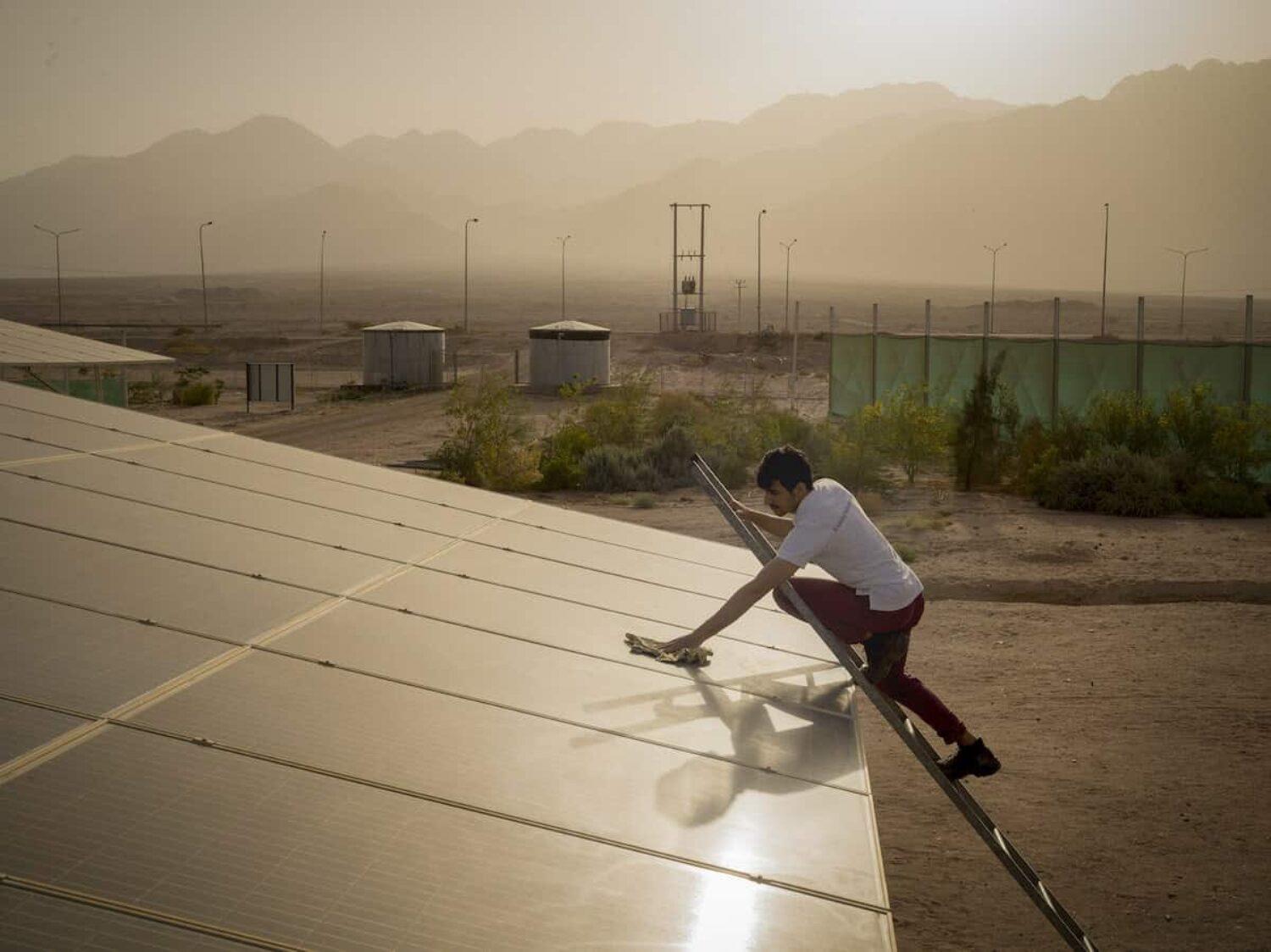
Solar panels need to be regularly cleaned of dust to stay effective. Image: Klaus Thymann
Photographer Klaus Thymann, who took these photos, said: “Even though the setting looks sci-fi, it’s a very lo-fi method. You don’t have to reinvent anything, you just have to apply it: solar power, desalination, and growing crops where there’s plenty of sunlight.
“What fascinates me are these kinds of solutions that we already have to hand, and that just need to be scaled. When it comes to the climate crisis, it’s important to focus on what we can do right now, as soon as possible. You hear people saying, ‘We just need to invent some future tech to solve this mess…’ Why not deploy what we have now?”
Main image: Klaus Thymann
This article is republished from Imagine5, a Positive News partner. Read the original article here.
Help us break the bad news bias
Positive News is helping more people than ever to get a balanced and uplifting view of the world. While doom and gloom dominates other news outlets, our solutions journalism exists to support your wellbeing and empower you to make a difference towards a better future. And as Positive News’ audience and impact grows, we’re showing the rest of the media that good news matters.
But our reporting has a cost and, as an independent, not-for-profit media organisation, we rely on the financial backing of our readers. If you value what we do and can afford to, please consider making a one-off or regular contribution as a Positive News supporter. Give once from just £1, or join 1,000+ others who contribute an average of £3 or more per month. You’ll be directly funding the production and sharing of our stories – helping our solutions journalism to benefit many more people.
Join our community today, and together, we’ll change the news for good.
